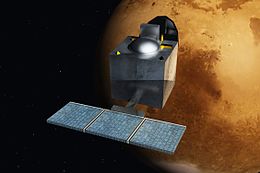The Indian Space Research Organization (Isro) on Saturday performed
the last of the five orbit-raising manoeuvre on its Mars Orbiter in the
early hours, raising the apogee (farthest point from Earth) of the
spacecraft to over 1.92 lakh km.
 "The fifth orbit-raising
manoeuvre of Mars Orbiter Spacecraft, starting at 01:27am (IST).. with a
burn time of 243.5 seconds has been successfully completed. The
observed change in apogee is from 1,18,642 km to 1,92,874 km," Isro
said.
"The fifth orbit-raising
manoeuvre of Mars Orbiter Spacecraft, starting at 01:27am (IST).. with a
burn time of 243.5 seconds has been successfully completed. The
observed change in apogee is from 1,18,642 km to 1,92,874 km," Isro
said.
During the first three orbit raising operations, ISRO has progressively tested the autonomy functions of the spacecraft that are essential for trans-Mars injection and Mars orbit insertion. The systems tested satisfactorily are:
by-sanjay kv
sanjay.kanakkot@gmail.com
 "The fifth orbit-raising
manoeuvre of Mars Orbiter Spacecraft, starting at 01:27am (IST).. with a
burn time of 243.5 seconds has been successfully completed. The
observed change in apogee is from 1,18,642 km to 1,92,874 km," Isro
said.
"The fifth orbit-raising
manoeuvre of Mars Orbiter Spacecraft, starting at 01:27am (IST).. with a
burn time of 243.5 seconds has been successfully completed. The
observed change in apogee is from 1,18,642 km to 1,92,874 km," Isro
said.Current status
On 19 October 2013, ISRO Chairman K. Radhakrishnan announced that the launch had to be postponed by a week as a result of a delay of a crucial telemetry ship reaching Fiji Islands. The launch was rescheduled for 5 November 2013. The PSLV rocket successfully lifted off at 09:08 UTC (2:38 p.m. IST), and placed the satellite into Earth orbit at 09:50 UTC, with a perigee of 264.1 km, an apogee of 23,903.6 km, and inclination of 19.20 degrees, with both the antenna and all three sections of the solar panel arrays being deployed.During the first three orbit raising operations, ISRO has progressively tested the autonomy functions of the spacecraft that are essential for trans-Mars injection and Mars orbit insertion. The systems tested satisfactorily are:
- The prime and redundant chains of gyros and accelerometers.
- Liquid motor attitude control thrusters.
- Attitude, orbit control electronics and associated logics for their fault detection isolation, and reconfiguration.
- Functioning of the prime and redundant star sensors.
Orbit raising manoeuvres
- First orbit raising
- Second orbit raising
- Third orbit raising
- Fourth orbit raising
- Supplemental burn
- Fifth orbit raising
by-sanjay kv
sanjay.kanakkot@gmail.com












0 comments:
Post a Comment